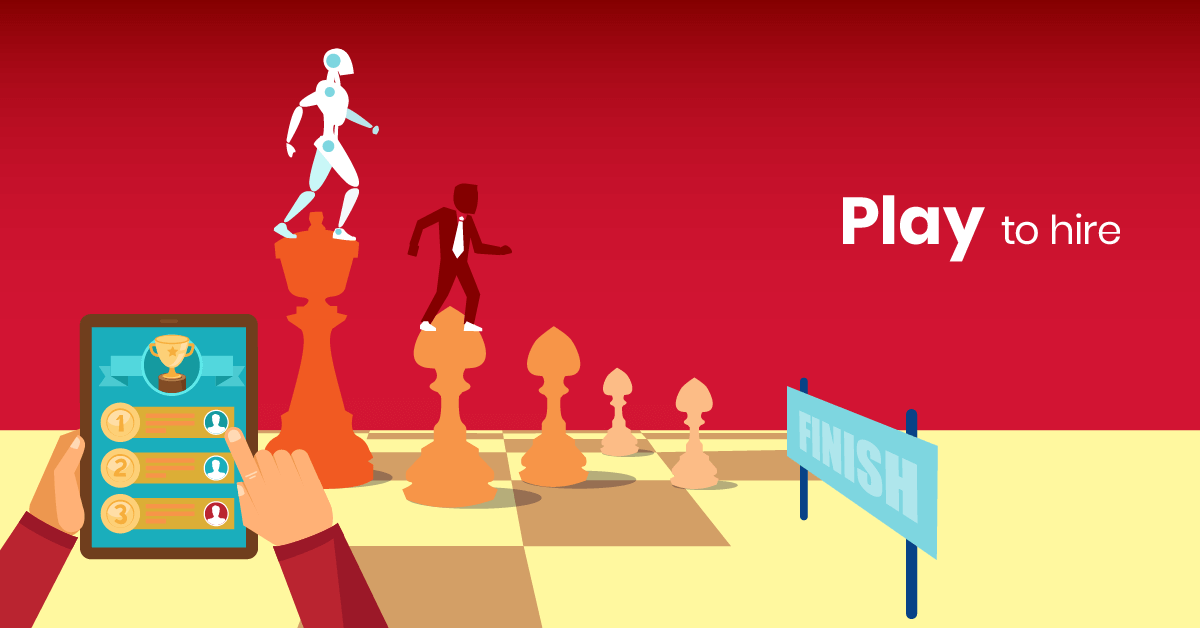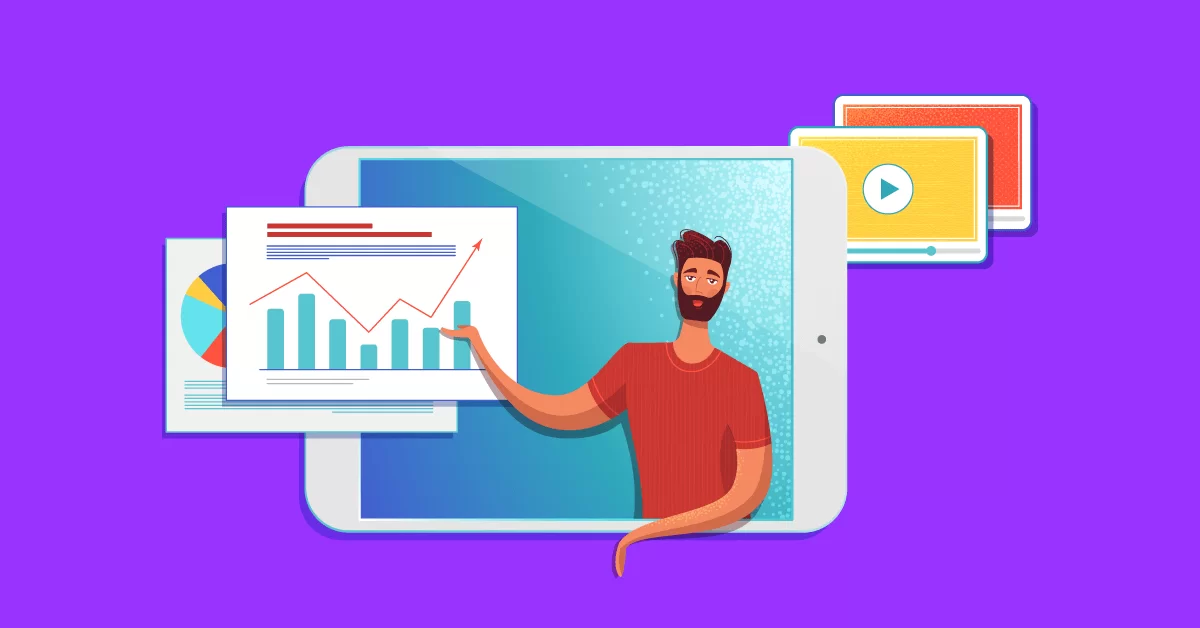They know this because the Entertainment Software Association reported that around 164 million people play games in the United States alone. The average age of these people (drumroll, please) is 33. So, it’s no long shot to predict that using gamification in hiring will attract the right people to your company.
But now you’re wondering, what on earth is gamification in HR? And how would you know it if you saw it? Well, you’re about to embark on a gamification journey, including real examples of gamification in recruitment.
What is gamification in recruitment?
Gamification expert, Yu-Kai Chou, says that gamification is design that places the most emphasis on human motivation. And that, in essence, it’s human-focused design. This makes gamification especially important when you want to put employees at the center of recruitment.
Gamification can have touch points at any or all stages of the recruitment process. For example, Domino’s Pizza Mogul game builds employer brand awareness by inviting people to create their own pizza, and earn badges and money every time it’s sold. This attracts young candidates who are looking to join an innovative, fun, and creative team.
At the selection phase, games can be used to test candidates on industry knowledge, product knowledge, and skills like creativity and problem-solving. A great example is Google’s Code Jam, where programmers put their coding skills to the test in a competition that can earn them a championship title and $15,000. Google’s reward? A shortlist of candidates who have proven their skills before even applying for a job.
But gamification in HR isn’t only useful for finding and hiring the right people. Once a new employee joins the team, you can (nay, should) use gamification for onboarding, too. Why? Because companies who do, tend to experience a close to 50% increase in engagement, and 36% lower staff turnover.
By now, you’re probably furiously scribbling down ideas of how you can bring games to your HR processes. But, even if these examples haven’t made the case for gamification in recruitment, you’ll be bowled over by how simple it is to implement.
How to use gamification to attract top talent
Here are a few easy ways to convert the often boring and frustrating tasks of recruitment, selection, and onboarding into fun processes for everyone.

Competitions and leaderboards
Chances are your company already has a career page. Sadly, it’s also likely that potential candidates spend little more than 10 seconds browsing through the information there. But what if you offered them a fun experience paired with rewards?
In a recent survey TalentLMS conducted, 85% of respondents said that they’d spend more time on software that was gamified. So, why not use public competitions, like the Domino’s Pizza example described earlier, to inspire candidates to engage with your company’s career site and social media pages?
For example, you could create an online quiz show, where competitors must get all of the questions about the company right in order to win. The prize could be money, free products, or even a prestigious title.
Make the game even more competitive by using leaderboards to keep track of record or title holders. This creates excitement among competitors and those who are rooting for them, and it encourages repeat attempts for those whose records have been beaten.
Competitions like this spread employer brand awareness, and educate prospective candidates about your company. But, by requesting an email address to join the competition, they also provide you with a pool of candidates that might be both well-suited to your team, and interested in joining it.
Simulations and puzzles
Gamification is definitely trendy, but you might be surprised to know that it has value as an assessment tool, too. Yes, interviews have been used for thousands of years (or at least it feels that way), but they’re prone to bias. Plus, candidates can easily prepare the perfect responses to interview questions before even entering your building.
Gamified assessments, however, can include real situational tests for skills and behaviors that candidates will use on the job. PwC, for example, used the 2-round Multipoly game to simulate their interview and internship experiences. Players became virtual interns at a simulated office, which quickly enabled PwC to identify players who would be high performers on the job. Likewise, players had an opportunity to see whether they would enjoy working there.
Leverage simulations and puzzles during the selection stage to quickly narrow down your talent pool based on capabilities and behaviors. These games could test problem-solving, creative thinking, conflict management, time management, or even how candidates cope with pressure. The result will be peace of mind that new employees will be able to meet job expectations.
Gamified onboarding programs
Onboarding training programs are notoriously dry and boring. But gamification in recruitment means that yours doesn’t have to be. Because adding a gaming element transforms onboarding into a 2-way information sharing process, where new hires can learn about the company while having fun. And there are many different ways to do this.
Gamify your onboarding course by incorporating a storytelling element. New employees might take on a character, and meet other characters representing real people in the company as they move through each chapter. Make each module a new ‘level’ in the game, and reward them with badges to collect as they get closer to completion.
Then, to make new employees feel supported and comfortable with asking for help, turn information sharing into a game. Create a Q&A forum, and reward employees who offer the most assistance to new hires, or those whose answers receive the most ‘likes’ from other employees. This could be complemented with a leaderboard that gives recognition to employees who perform the best in the game.
Conclusion
Gamification in recruitment is the key to engaging a pool of candidates, quickly identifying the top talent, and then onboarding them in a way that is fun and effective. It’s the game that everyone’s playing. Are you?



